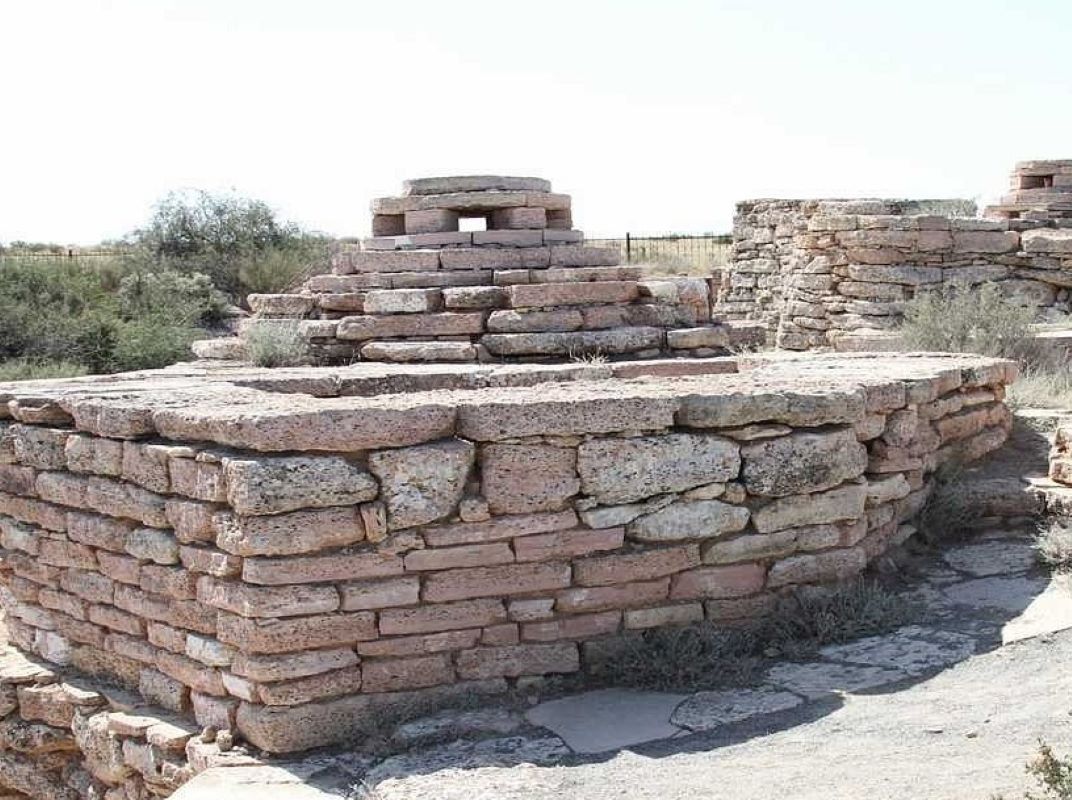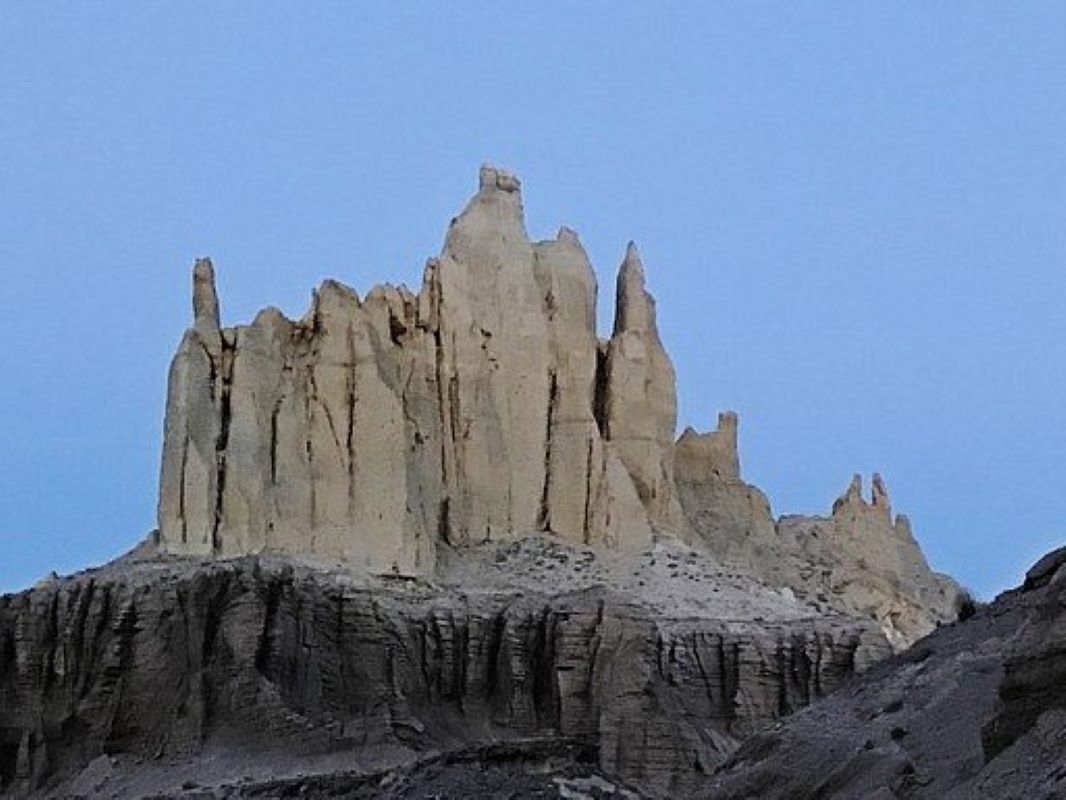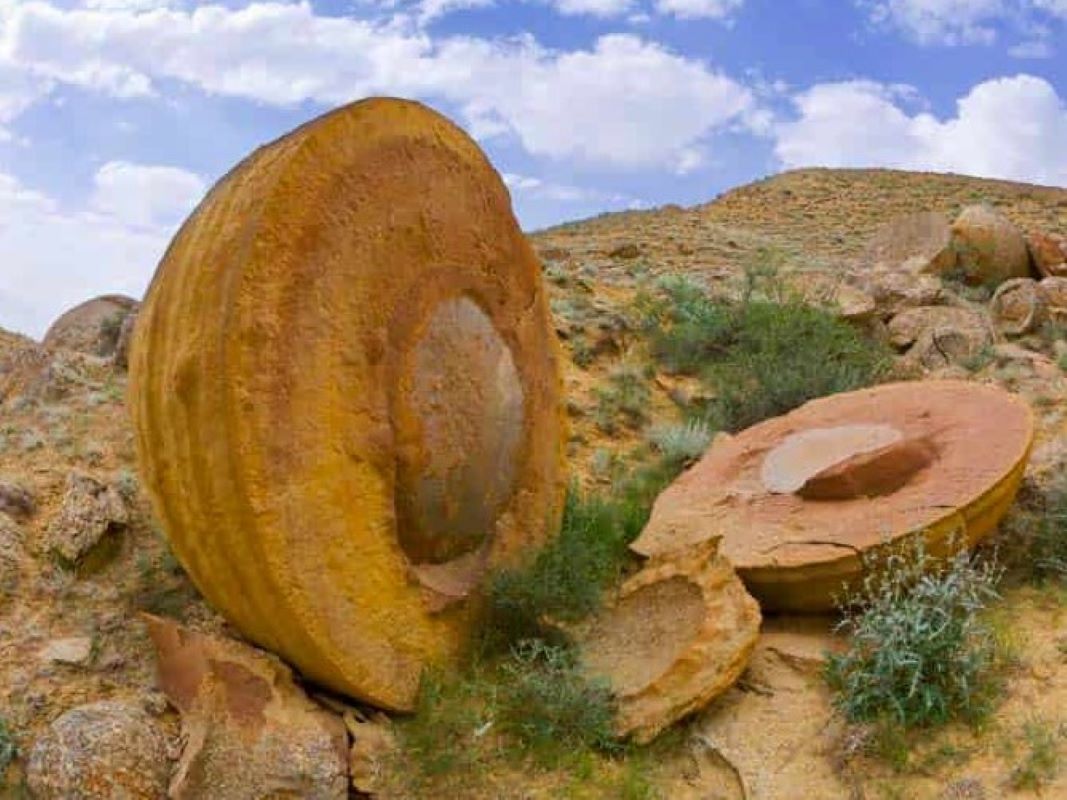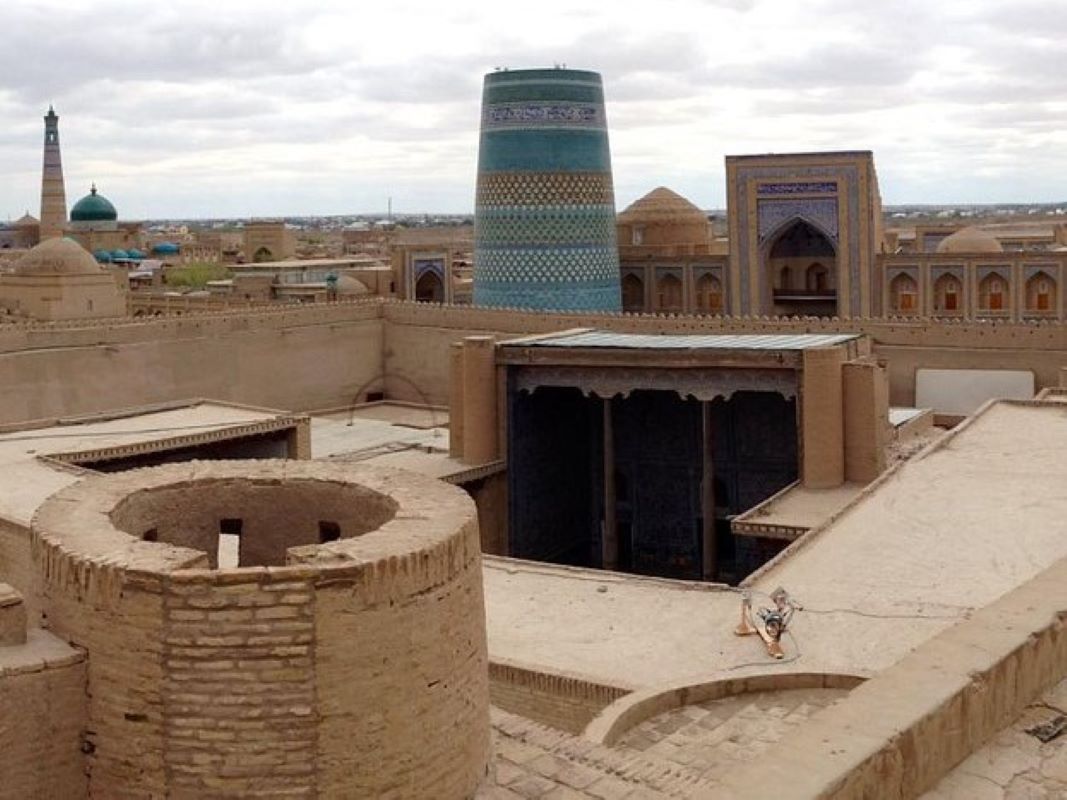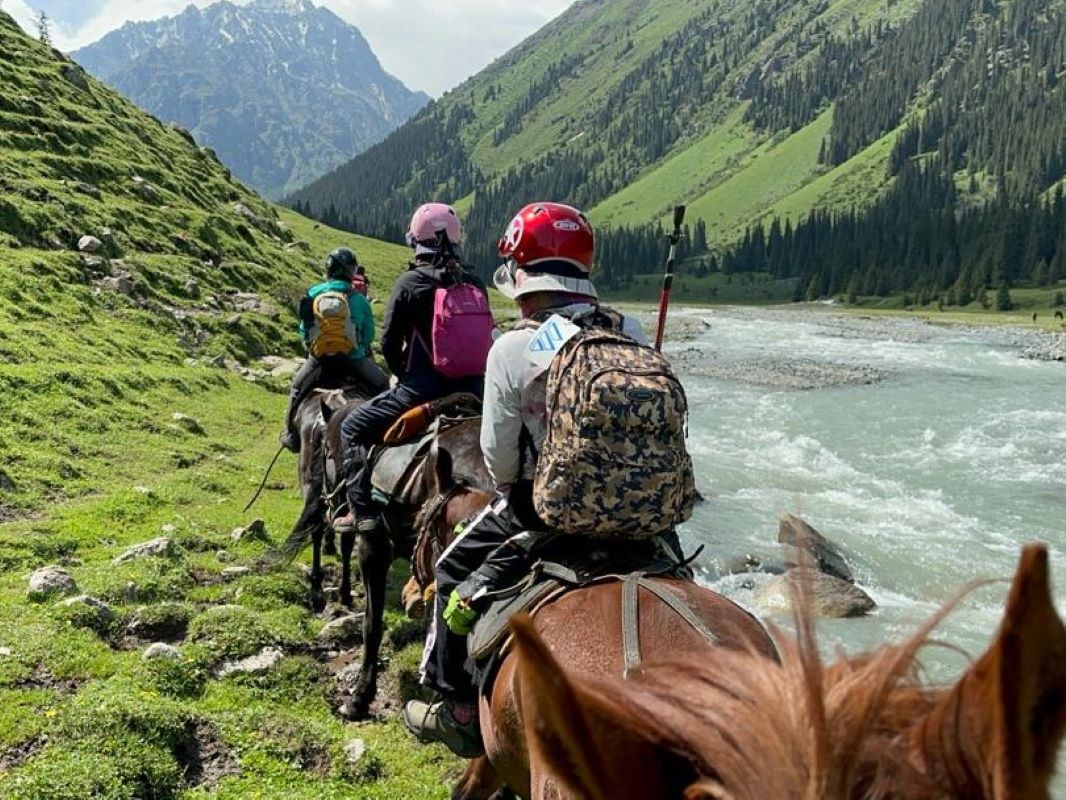The underground mosque is located at some distance from the necropolis to the north-east from it. Sultan-Epe mosque is cut in the bulk of limestone rock. The mosque is located in the southernmost part of the northern coast of the sea. In 2003 archaeological research was performed by specialists of Mangystau National Historical and Cultural Reserve under the direction of A. Astafyev and M. Kalmenov. The underground mosque consists of 9 rooms. The entrance room ends with in a kind of very steep stairs made of rough stone slabs of different sizes. The staircase descends into a small hall with a high roof and a skylight. The walls are built of stone. Inside the room there is a high staircase. The hall is rectangular, and the walls are up to 3 m high. On the north wall of the hall there is also a light opening that leads to a narrow room. Special attention deserves Sultan-Epe canyon and the well . Sultan-Epe canyon is located on the northern coast of the Tupkaragan Peninsula, near the Sarytas Gulf extended to 5 km from the sea. It is a very beautiful place. Sultan-Epe canyon is a plethora of different flora and fauna that you will not find elsewhere in the region.
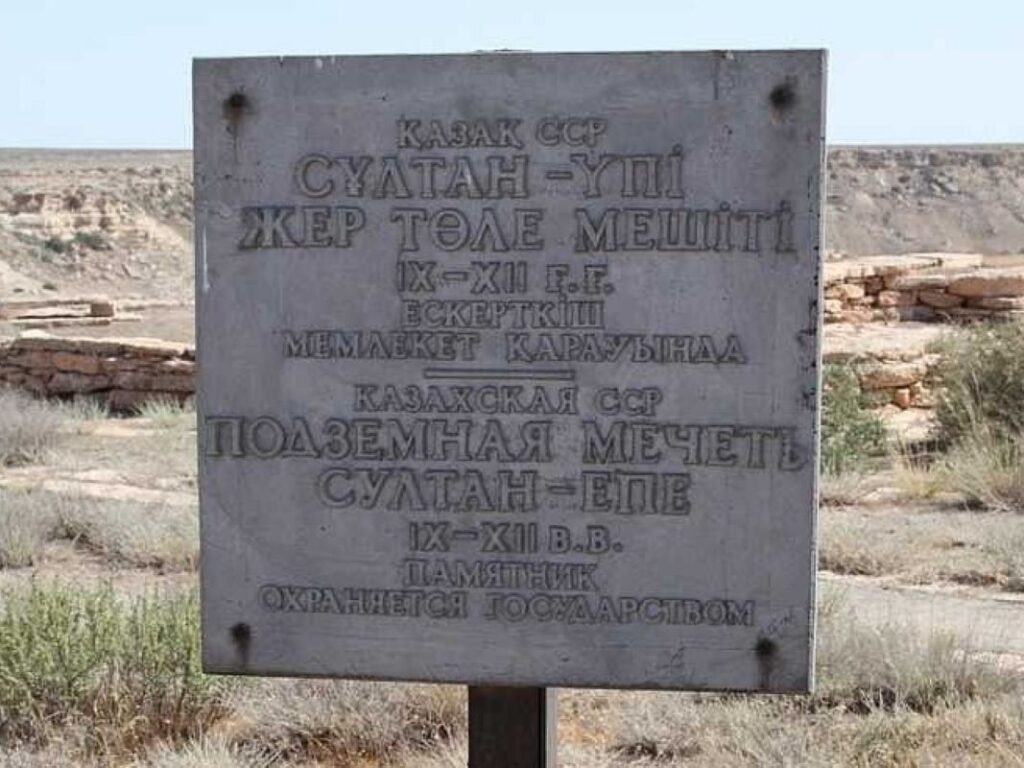
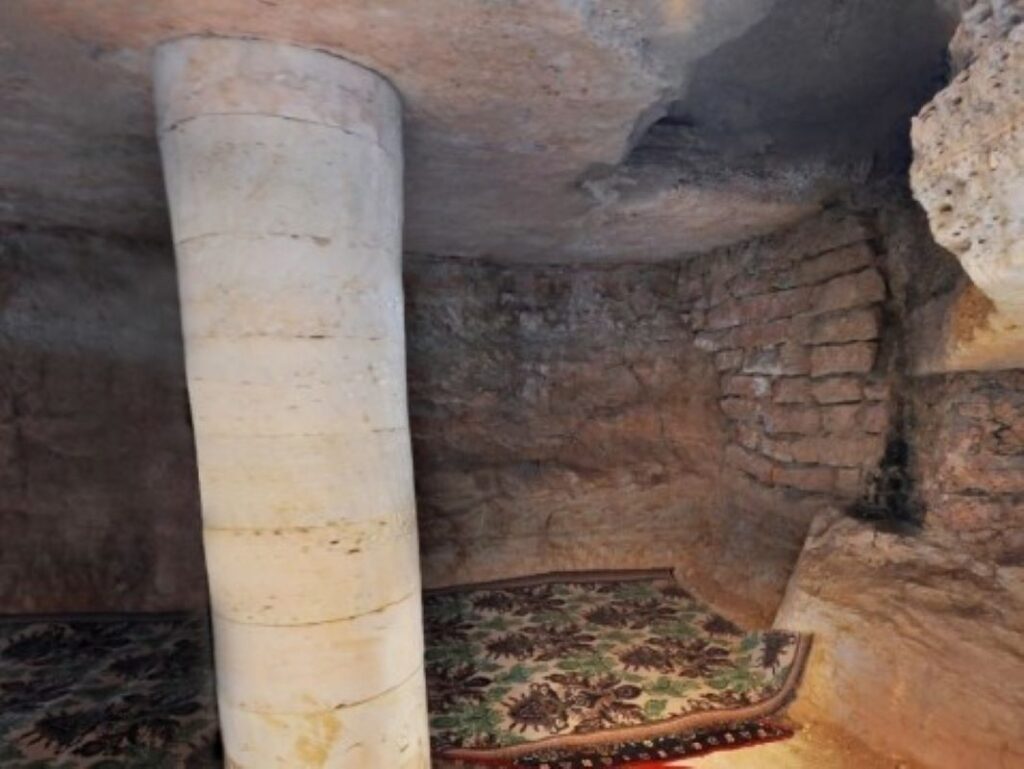
Sultan-Epe was the son of the famous Central Asian mystic poet Khakim-Ata (Suleiman Bakyrgani), a disciple of Ahmad Yassawi, and Ambar-Ana. According to the legend, Sultan-Epe is the patron of drowning people and fishermen. He did many miracles. For example, transferred Kaaba to Bakyrgan (Khorezm) for his father, miraculously revived slaughtered bulls, etc. However, Khakim-Ata treated activities of his sun with jealousy and distrust. In response Sultan-Epe bid farewell to his father and mother ans became invisible. Having heard of this Khodja Ahmed Yassawi punished Khakim-Ata with an inverse blessing: allegedly on his command over the grave of the latter Amu Darya was flowing for forty years and the city of Bakyrhan was destroyed. About a hundred years after disappearance of Sultan-Epe the Nogais were migrating in Mangistau. Among the nomadic Nogais there was a mullah who taught children to read and write. Among his pupils there was weak and lame boy named Heyrulla. Every day he was beaten: in school by the mullah, and at home by his parents. Comrades mocked him and always insulted him. In short, his life was hard.

